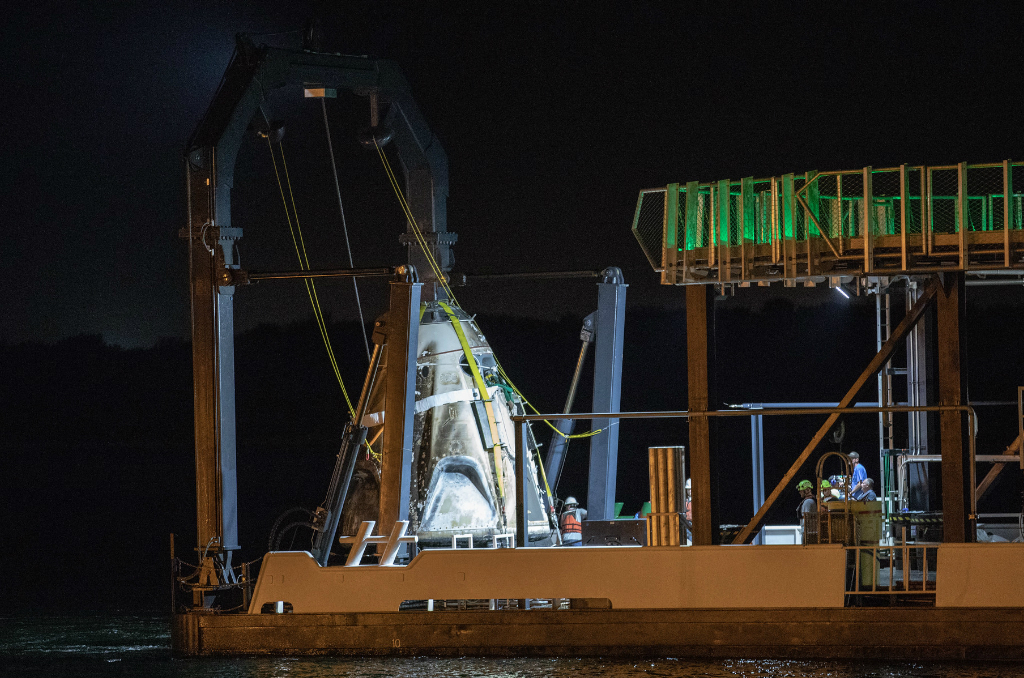NASA’s top boss said the late April “anomaly” that lit a SpaceX capsule ablaze will definitely delay the U.S. space agency’s plans for crewed flights.
While SpaceX’s official investigation into the explosion hasn’t wrapped up, NASA Administrator Jim Bridenstine told reporters at the Paris Airshow that the timeline for a manned launch has shifted.
“There is no doubt the schedule will change,” he said. “It won’t be what was originally planned.”
There are two theories as to what happened to the Crew Dragon capsule during those Saturday afternoon static tests.
The first is that there was a design flaw. This would spell disaster for SpaceX because NASA would most likely ask the private space company to go back to the drawing board on vessel design.
The second theory is that the capsule suffered damage while landing during a previous flight mission. Since SpaceX won’t be reusing spacecraft for crewed missions, NASA might not ask for any changes to the vessel. However, it’s not a given because SpaceX had plans to use refurbished hardware on Crew Dragon missions.
NASA and SpaceX were hoping that the April emergency thruster trials would be the last battery of tests before a crewed mission to the International Space Station in June or July, which would have marked the first crew-carrying launch from U.S. soil since July 2011.
Hopes were particularly high following a successful unpiloted flight the month before. During the six-day mission, the capsule docked with the International Space Station before returning to Earth.
The last major update on the explosion came from a NASA press release in late May. The press release read, in part, “Teams have completed work to ensure the site is safe and are focusing on the root cause analysis, which will determine the impact to commercial crew flights tests… Following the test, NASA and SpaceX immediately executed mishap plans established by the agency and company. SpaceX fully cleared the test site and followed all safety protocols.”
NASA has been dependent on Russian Soyuz rockets – with a price tag of $80 million a seat – to shuttle American astronauts to and from the International Space Station.
To break away from the Russian reliance, the U.S. space agency signed commercial-crew contracts worth $6.8 billion with SpaceX and Boeing.
However, with both carriers plagued with a myriad of issues and delays, NASA might be stuck with ferrying on the Russian rockets for a little longer. According to Reuters, the space agency is considering paying for two more Soyuz seats for fall of 2019 and spring of 2020.
SpaceX had been leading Boeing in the race to launch the first crewed capsule after Boeing’s CST-100 Starliner had a fuel leak during a test last year. Boeing now appears to be in the driver seat, with a planned unmanned flight in November and a possible crewed mission shortly after.
Space policy expert John Logsdon said delays and malfunctions are bound to happen, so it’s not at all that surprising.
“We’ve been down this road before,” he told Space.com “You have to remind people that we had engines blowing up during shuttle development, and, clearly, we had the Apollo 1 fire.”
Mike has more than 30 years of experience in marketing and public relations. He once owned his own agency and has worked with some of the largest brands in the world.

